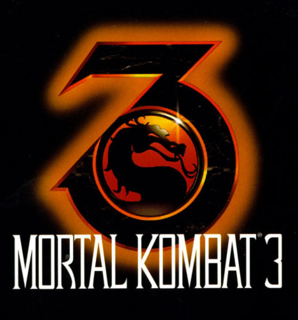Excellent!
Anyway, like I said, after playing MK2 and then making the switch to MK3, my jaw dropped! The game moved so, so fast! The graphics were far superior and the battles were wild! Never had I heard so much screaming in a game!
The characters all looked different (especially the returning ones), and that was a good thing. The sound effects were a little bit rough, but good enough to get a thumbs up in my book. The music, I dare say, is still the best compared to any other MK game in the series. With a more urban setting (quite a few of the arenas were set in New York), the background music was a blend of urban pop mixed with dark vocals and eerie chants. All in all, it was awesome! I actually have a cd of the background tracks, and I still listen to it today from time to time. Furthermore, appearance wise, well, back then, the game looked incredible (and I’m talking about the Sega Genesis here)! Boasting a total of 15 characters (including 1 hidden fighter), each fighter had roughly 4 to 7 moves at their disposal. Along with this was the inclusion of a brand new combo system (which was extensive even in the air), a run feature that made the game even faster and more responsive control system (to match the speed of the game)! Finishing your opponent was also more fun now as each character had 2 fatalities, a babality, a friendship and to top it off, animalities were introduced which allowed your character to turn into an animal and gore their opponents to death! The game gave you three battleplans in arcade mode (as opposed to just 1 in MK2) – novice, warrior and master, each of varying length. Picking a particular battleplan would cause the announcer to respond accordingly. Also, the game had an endurance mode (2 players onwards) that allowed you to pick up to 8 fighters and dual it out until one player runs out of opponents. Still on 2 player modes, this game introduced a versus screen for the first time, and below the screen were 6 icon / boxes that could be changed with a tap of a button on the joypad. There are 10 different icons, and as this had to be done by both players on the versus screen, this meant literally hundreds of different combinations could be inputted. Tapping in a certain combination would allow the player to unlock loads of things which may or may not affect the corresponding match, like fighting hidden fighters, disabling throws and other moves, longer fatality time and much, much more. Sadly, this option never quite returned in subsequent MK games with such depth and diversity (there weren’t a lot of codes in MK4).
The arenas were a little more interactive this time, what with the return of stage fatalities and also allowing you to send you or your opponent crashing through the ceiling to another arena with a simple uppercut! I will never forget the first time I executed a stage fatality in MK3, and even having a stage fatality executed on to me! The Bell Tower arena, for instance, was and still is a classic! It was plain sadistic fun to watch your opponent go crashing through 7 floors below, and then finally crashing onto a bunch of huge spikes! Then there’s the Subway arena, which allows you to uppercut your opponent into the path of a subway train!
The only drawback to the game, if ever, was that the characters were a little bit unbalanced, in that there were high tiered characters and low tiered characters, unlike MK2 where basically everyone was evenly matched.
In conclusion, this was a great game which had a nice dark feel to it (though not as dark as MK2), and amazingly fun. In fact, I still take out my old outdated genesis once in a while just to play this game to re experience the nostalgia of it. Call me a sentimental fool, but I dare say that for some weird reason, the genesis version of MK3 was a lot more fun to play compared to its subsequent 32 bit counterparts.

